F4F Wildcat
Models
En 1936, l'US Navy avait commandé à la firme Grumman, un chasseur-biplan embarqué, devant être opposé à un projet de chasseur monoplan de la firme Brewster (futur Buffalo). Ce nouveau chasseur devait être propulsé par un moteur Wright XR-1620-2 de 900 CV ou Pratt & Whitney XR-1535-92 de 875 CV, avec hélice bipale. Cependant avant même le début du développement du G-16 ou XF4F-1, le projet fut abandonné au profit de celui d'un chasseur monoplan, le XF4F-2.
In 1936, the Navy had ordered at the Grumman, a carrier-borne biplane fighter , to be opposed to a monoplane fighter project of the firm Brewster (future Buffalo) . The new fighter was to be powered by a Wright XR-1620-2 900 HP or Pratt & Whitney XR-1535-92 875 CV, with two-blade propeller. However even before the start of the development of the G-16 or XF4F-1, the project was abandoned in favor of a monoplane XF4F-2 fighter.
Projet de chasseur embarqué monoplan succédant en juillet 1936 à celui avorté du XF4F-1 et toujours opposé au même projet de chasseur monoplan de la firme Brewster (futur Buffalo). Le G-18 ou XF4F-2, était propulsé par un moteur Pratt & Whitney R-1830-66 de 1050 CV et armé de 2 mitrailleuses de 12.7 mm (.50 cal) sur le capot (possibilité de monter 2 autres mitrailleuses du même calibre sur les ailes, en plus de 2 bombes). Le XF4F-2 fit son premier vol le 2 septembre 1937. Le prototype fut endommagé en avril 1938. Cependant il perdit le combat en 1938 face au Buffalo mais en raison du potentiel (vitesse maximum de 467 km/h), le programme fut poursuivit.
Project of fighter monoplane in July 1936 that aborted the XF4F-1 and still opposed to the same project of the firm Brewster (future Buffalo) monoplane fighter. The G - 18 or XF4F-2, was powered by a Pratt & Whitney R-1830-66 1050 HP and weapon of 2 machine guns of 12.7 mm (.50 cal) on the hood (possibility to mount 2 other machine guns of the same caliber on the wings, in addition to 2 bombs). The XF4F-2 made its first flight on September 2, 1937. The prototype was damaged in April 1938 / however he lost the fight in 1938 against Buffalo but due to potential (maximum speed of 467 km/h), the program was pursued.
Suite à l'échec du XF4F-2 face au Brewster Buffalo, le programme fut cependant poursuivit et le prototype fut amélioré, ce qui donna naissance au G-36 ou XF4F-3. Le XF4F-3 avaient des ailes (non pliables) plus grandes et plus larges avec des extrémités carrées (arrondies sur le XF4F-2). L'avion était armé de 2 mitrailleuses Colt-Browning de 12.7 mm (.50 cal) montées sur les ailes et 2 mitrailleuses Colt-Browning de 7.62 mm (.30 cal), montées sur le capot. Le nouveau prototype (qui fit son premier vol en février 1939) démontrant de réels progrès, il fut immédiatement commandé en juin 1938 par l'US Navy (malgré sa perte en décembre 1940). Cette dernière devra cependant attendre que les commandes de pays étrangers en guerre fussent satisfaites avant d'être livrée. Le F4F-3 était cependant en service lorsque les USA entrèrent en guerre en décembre 1941. Les 100 premiers exemplaires étaient propulsés par un moteur Pratt & Whitney R-1830-76 de 1200 CV alors que les 90 suivants étaient propulsés par un moteur Pratt & Whitney R-1830-86, également de 1200 CV (G-36A). Le F4F-3 était armé de 4 mitrailleuses Colt-Browning de 12.7 mm (.50 cal), toutes montées dans les ailes. Les britanniques baptisèrent initialement l'avion Martlet I. Cependant ils commandèrent et reçurent une version avec le Twin Wasp original, mais avec un capot modifié, sous la désignation G-36B, qu'ils baptisèrent Martlet II. Les 10 premiers G-36Bs étaient munis d'ailes non-pliantes et reçurent la dénomination Martlet III.
Following the failure of the XF4F-2 against the Brewster Buffalo, the development was however pursued and the prototype was improved, which gave birth to the XF4F-3 or G-36. The XF4F-3 had wings (non-folding) more large and wider with square ends (rounded on the XF4F-2). The aircraft was armed with 2 Colt-Browning machine guns of 12.7 mm (.50 cal) mounted on the wings and 2 7.62 mm (.30 cal) Colt-Browning machine guns, mounted on the hood. The new prototype (which made its first flight in February 1939) demonstrating real progress, and it was immediately commissioned by the U.S. Navy (despite its loss in December 1940). However, the latter must expect that orders from foreign countries in war were met before being delivered. The F4F-3 was in service when the USA entered the war in December 1941. The first 100 copies were powered by Pratt & Whitney R-1830-76 1200 HP while the 90 following were propelled by an engine Pratt & Whitney R-1830-86, also of 1200 HP (G-36A). The F4F-3 was armed with 4 Colt-Browning machine guns of 12.7 mm (.50 cal), all mounted in the wings. In British service initially, the aircraft were known as the Martlet I. However British ordered and received a version with the original Twin Wasp, but with a modified cowling, under the designation G-36B or Martlet II. The first 10 G-36Bs were fitted with non-folding wings and were given the designation Martlet III.
 |
XF4F-3 |
src: Wikipédia |
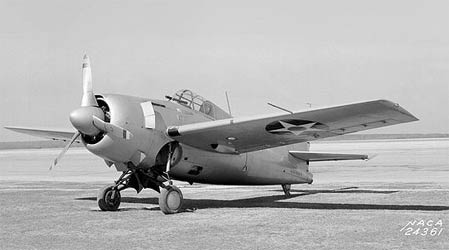 |
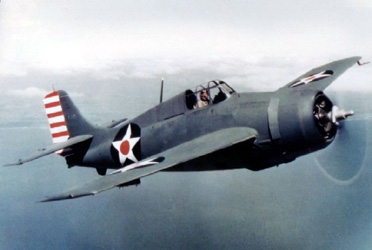 |
F4F-3 Wildcat (early) |
F4F-3 Wildcat |
src: Wikipédia |
src: Wikipédia |
Data |
Drawings |
Avion similaire au F4F-3 mais propulsé par un moteur Pratt & Whitney R-1830-90 de 1200 CV, doté d'un turbocompresseur plus primitif (un seul étage, deux vitesses) moins puissant mais plus fiable, expérimenté sur le XF4F-6. Ce modèle fut également conçu en raison de la pénurie de turbocompresseurs modernes utilisés sur le F4F-3. Les Americains en recevront 65 et les Britanniques 130 (avec ailes pliantes) sous la désignation de Martlet III(B). Notons que 30 F4F-3A destinés initialement à la Grèce seront livrés à la Grande-Bretagne qui les utilisera sous la désignation de Martlet III, puis Martlet III quand le modèle de série du F4F-3A sera introduit.
Aircraft similar to the F4F-3 but powered by a Pratt & Whitney R-1830-90 of 1200 HP, equipped with a more primitive supercharger (single-stage, two-speed) less powerful but more reliable, experienced on the XF4F-6. This model was also designed due to the shortage of modern superchargers used on F4F-3. Americans will receive 65 and the British 130 (with folding wings) under the designation of Martlet III (B). Note that 30 F4F-3A intended initially for the Greece will be delivered to Great Britain who use under the designation of Martlet III, then Martlet III when the series model of F4F-3A model will be introduced them.
Drawings |
Version améliorée du F4F-3 qui effectua son premier vol en mai 1941. Avec cette version produite à 1169 exemplaires on adopte définitivement les ailes repliables pour faciliter le rangement dans les hangars et sur les ponts des porte-avions. De plus l'armement est amélioré par l'adoption de deux nouvelles mitrailleuses de 12.7 mm sur les ailes, ainsi que la protection par l'adoption de réservoirs auto-étanches. Ces modifications alourdirent l'avion ce ne manqua pas d'avoir des conséquences sur ses performances. Les Britanniques recevront 220 exemplaires baptisés Martlet IV.
Iimproved version of F4F-3 which first flew in May 1941. With this version produced at 1169 copies, were definitively adopted the folding wings for easy storage in hangars and on the decks of aircraft carriers. Armament is enhanced by the adoption of two new machine guns of 12.7 mm on the wings, as well as the protection by the adoption of self-sealing fuel tanks. These changes increased the aircraft weight that did not fail to have an impact on its performance. The British will receive 220 copies baptized Martlet IV.
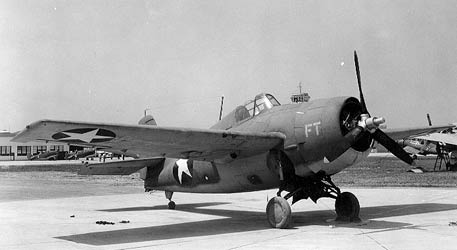 |
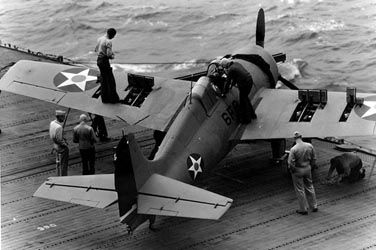 |
F4F-4 Wildcat |
|
src: WW2
Vehicles |
|
Data |
Drawings |
Prototype assemblé à deux exemplaires, expérimentant le moteur Wright R-1820-40 de 1200 CV, qui fit son premier vol en décembre 1940. Commandés p
Prototype assembled in two copies, experimenting the Wright R-1820-40 engine of 1200 hp, which made its first flight in December 1940.
Prototype unique, expérimentant le moteur Wright R-1830-90 de 1200 CV, qui fit son premier vol en automne 1940. L'avion sera produit en série sous la désignation F4F-3A.
Single prototype, experimenting the Wright R-1830-90 1200 HP engine, which made its first flight in autumn 1940. The aircraft will be produced in series under the designation F4F-3A.
Désignation donnée aux F4F-4 assemblés par la firme Eastern Aircraft (General Motors). Cette version produite à 1150 exemplaires (qui fit son premier vol le 31 août 1942), était identique au F4F-4, sauf pour l'armement qui comme sur le F4F-3, ne comportait que 4 mitrailleuses de 12.7 mm et non 6 comme sur le F4F-4. L'US Navy et Marine Corps en reçurent 830 exemplaires alors que les Britanniques en reçurent 311 sous la désignation Martlet V (ou Wildcat V).
Designation given to the F4F-4 assembled by the firm Eastern Aircraft (General Motors). This version produced at 1150 copies (which made its first flight on August 31, 1942), was identical to the F4F-4, except for armament, that as on the F4F-3 had 4 machine guns of 12.7 mm only and not 6 as on the F4F-4. The US Navy and Marine Corps received 830 copies while the British received 311 under the designation Martlet V (or Wildcat V).
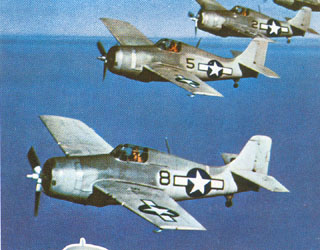 |
FM-1 Wildcat
|
src: ww2total |
Data |
Drawings |
Version ultime du Wildcat, qui fut allégée pour opérer sur les porte-avions d'escorte. Cette version produite à 4779 exemplaires, deviendra le chasseur embarqué standard des 114 navires américains de ce type jusqu'à la fin de la guerre, que ce soit pour l'US Navy ou la Royal Navy. En fait la désignation F4F-8 ou XF4F-8, désigne les 2 prototypes développer par Grumman. La production sera assumée par la firme Eastern Aircraft (General Motors) sous la désignation FM-2 (4437) et Martlet VI (340 pour le compte des Britanniques, rebaptisés Wildcat VI en mars 1944).
Ultimate version of the Wildcat, which was alleviated to operate on the escort carrier. This version produced at 4779 copies, will become the standard carrier-borne fighter of the 114 American ships of this type until the end of the war, for the U.S. Navy or Royal Navy. In fact the F4F-8 or XF4F-8 designation means the 2 prototypes developed by Grumman. The production will be assumed by the firm Eastern Aircraft (General Motors) under the designation FM-2 (4437) and Martlet VI (340 on behalf of the British, renamed Wildcat VI in March 1944).
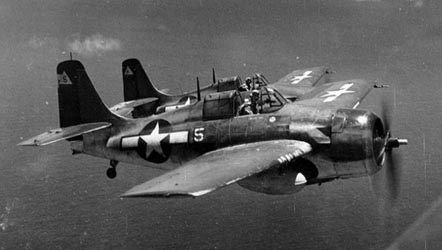 |
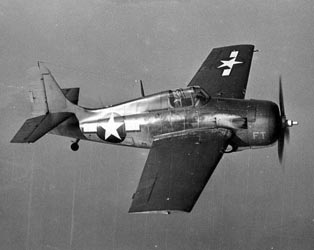 |
FM-2 Wildcat |
|
src: Wikipédia |
src: WW2
Fighters |
Data |
Drawings |
Les Américains en considérant le succès des hydravions de chasse japonais, décidèrent à l'automne 1942 de convertir le Wildcat en y installant des flotteurs (pour opérer depuis les archipels dépourvus d'aérodromes dans le Paficique). Deux prototypes du F4F-3S ou Wildcatfish seront assemblés par la firme Edo Corporation et ainsi qu'anticipativement 100 paires de flotteurs. Le F4F-3S effectua son premier vol le 28 février 1943. Cependant l'augmentation du nombre de porte-avions disponibles et des capacités de la Navy de construire rapidement des aérodromes, sonna le glas du besoin de ce type d'appareil et le projet fut abandonné.
Americans considering
the success of the Japanese float fighters, decided in the autumn of 1942
to convert the Wildcat by installing floats (to operate since the archipelagos
devoid of airfields in the Pacific). Two prototypes of the F4F-3S Wildcatfish
will be assembled by the Edo Corporation firm and as well as advance 100
pairs of floats. The F4F-3S first flew on 28 February 1943. However the
increase in the number of available aircraft carriers and capabilities
of the Navy to build quickly airfields, sounded the death knell of the
need for this type of aircraft and the project was abandoned.
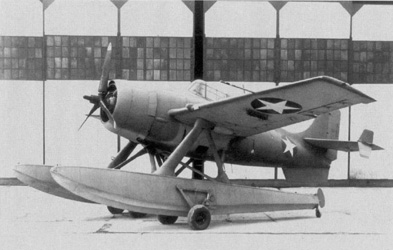 |
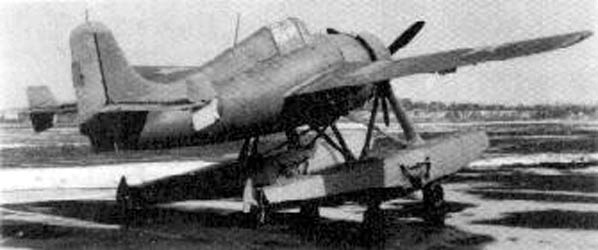 |
F4F-3S Wildcatfish |
|
src: Wikipédia |
src: WW2
Fighters |
F4F-3S
Wildlcatfish Specifications |
| General |
Type:
Float Fighter |
| Engine |
| Pratt & Whitney R-1830-36 double-row radial engine | 1200 hp | Pistons |
| Dimensions/Masses |
| Length: 11.91
m | Width: 11.58 m | Height:
5.53 m Weight: 2819 kg | Max. Combat Weight: 3797 kg |
| Performances |
| Max. Speed: 428 km/h | Ceiling: 10218 m | Range: 965 km |
| Armament |
MG:
6 x 0.5 in (12.7 mm) M2 Browning MG |
Drawings |
Version pour le reconnaissance-photographique du F4F-3.
Version for the photographic reconnaissance of the F4F-3.
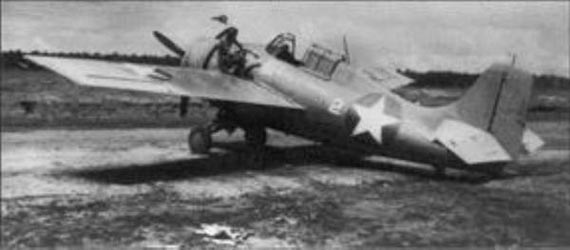 |
F4F-3P Wildcat |
src: WW2
Aircraft |
F4F-3P
Wildcat Specifications |
| General |
Type:
Shipborne Fighter |
| Engine |
| Pratt & Whitney R-1830-86 double-row radial engine | 1200 hp | Pistons |
| Dimensions/Masses |
| Length: 8.76 m
| Width: 11.58 m | Height:
3.60 m Weight: 2? kg | Max. Combat Weight: 3176 kg |
| Performances |
| Max. Speed: 531 km/h | Ceiling: 12000 m | Range: 1360 km |
| Armament |
MG:
4x 0.5 in (12.7 mm)M2 Browning MG |
Drawings |
Version pour la reconnaissance lointaine, dépourvue d'armement mais avec une capacité de réservoirs accrue (2590 L), lui conférant une autonomie exceptionnelle de plus de 5500 km. Cet avion qui fit son premier vol le 30 décembre 1941 et qui était doté aussi du pilote automatique fut commandé à 100 exemplaires mais la commande fut annulée au début 1942, alors que seulement 21 avions avaient été assemblés, le Wildcat devant à court terme céder la place au plus performant Hellcat. Notons que les ailes étaient non-repliables.
Version for long reconnaissance, devoid of weapons but with a capacity of reservoirs increased (2590 L), giving it an exceptional autonomy of more than 5500 km. The aircraft made its first flight on 30 December 1941 and who was endowed with also the autopilot was ordered at 100 copies but the order was cancelled in early 1942, while only 21 aircraft had been assembled, the Wildcat in short-term to give way to the more powerful Hellcat. Note that the wings were non-folding.
F4F-7
Wildcat Specifications |
| General |
Type:
Reconnaissance Aircraft |
| Engine |
| Pratt & Whitney R-1830-586 double-row radial engine | 1350 hp | Pistons |
| Dimensions/Masses |
| Length: 8.50 m
| Width: 11.06 m | Height:
3.60 m Weight: ? kg | Max. Combat Weight: ? kg |
| Performances |
| Max. Speed: 534 km/h | Ceiling: 10670 m | Range: +5500 km |
| Armament |
MG:
- |
Sources: